Dog
 From Citizendium - Reading time: 24 min
From Citizendium - Reading time: 24 min
| Domestic dog | ||||||||||||||||||||
|---|---|---|---|---|---|---|---|---|---|---|---|---|---|---|---|---|---|---|---|---|
| Scientific classification | ||||||||||||||||||||
| ||||||||||||||||||||
| Trinomial name | ||||||||||||||||||||
| Canis lupus familiaris[1] |
Dogs are domesticated canines that have been closely associated with humans ever since they first evolved from gray wolves several thousand years ago. Throughout the world dogs are still intimately associated with humans in a variety of roles, and because of this they are often called "man's best friend". Today they are nearly ubiquitous, as household pets, cherished companions, full-time workers, and even, in some cultures, as food.
Dogs and people may communicate better with each other than any other two species.[2] Dogs and humans understand each other on a basic level: we are able to interpret the dog's instinctive body language (along with canine vocalizations like the growl and whine); and the dog, in turn, has an innate ability to respond appropriately both to human body language, as well as to the emotional tone of the human voice. Some research suggests that dogs may be better at interpreting cues from humans than even our closest relatives, the chimpanzees.[3] People can be educated beyond these basics to manage their dogs more precisely, and dogs can be trained to be extremely responsive to people. In addition, dogs can modify the behaviour of their humans to a surprising degree.
The origin of the dog[edit]
Ancestry[edit]
By the mid-20th century, scientists had generally agreed that the immediate ancestor of the dog must be one of its close living relatives: jackals, coyotes or wolves, but they had trouble deciding on which one.[4] Most early research depended on archeological evidence to try to solve the riddle of the dog's origin.
This issue was finally solved using DNA, which proved that the Gray Wolf is the sole ancestor of all modern dogs.[5][6] Therefore, dogs are a subspecies (Canis lupus familiaris) of the Gray Wolf (Canis lupus).[7] The first theories placed original ancestors in Asian populations of the wolves, based on the diversity of comparing the genetic diversity of Asian wolves with that of modern dog breeds[5] while the data is consistent with multiple domestication events.[5][6] However in 2013, scientists analyzing over 100 DNA samples across the world and compared them with 18 ancient European canid samples and discovered the DNA of modern dogs most closely matched that of ancient wolves from Europe, indicating that domestication of dogs began there initiated by hunter-gatherer humans.[8] They also concluded that dogs are descended from a population of ancient European wolves that are now extinct.[9]
The domestication of the dog[edit]
Through the 1970s and 1980s, schoolchildren were taught that humans domesticated the dog. Nowadays, many scientists feel that a more accurate description would be that the relationship evolved on a more equal footing, with humans and dogs coming together to ensure their mutual survival in a hostile environment. Another way of looking at the question would be to ask if the domestication of the dog was a result of natural selection, in which nature plays the larger part in deciding which dogs survive; in this case the dogs which adapted most readily to humans in their environment, or of artificial selection--humans picking which dogs contributed to the gene pool based on which had traits humans found desirable--the precursor of selective breeding. Surveys and analysis have made cases for both theories.[10]
The history of the relationship between humans and dogs[edit]
The relationship between humans and dogs is certainly an ancient one. Cave paintings such as one found in Tassili n'Ajjer suggest that primitive man and dog were already living in harmony.[11] Dogs in such images are portrayed as hunters, both in the company of humans and alone, which can be taken as an indication of a developed relationship. Precise dates for these drawings are frequently debated, as they existed before recorded history, and our dating techniques can be affected by many factors, but some of this rock art is several thousand years old. The earliest known domestic dog remains "may date back as far as 10,000 BC, preceding the Neolithic period....evidence indicates that dogs were kept in Jericho by 6500 BC."[12]
By the time of the pharaohs, dogs had already established their value as workers and human companions. Egyptian paintings show that selective breeding had already begun; sighthounds were clearly identified. Dog mummies have been found in the tombs of Pharaohs. The Assyrians, Greeks and Romans all used dogs for hunting and as battle companions. Pliny the Elder described the value of dogs in no uncertain terms, and also referred to the existence of--if not refined dog breeds, certainly defined dog types.[13][14][15] A Chinese ceramic statue from the era of the T'ang Dynasty, circa 700 A.D., depicts a dog bearing a resemblance to today's Dandie Dinmont Terrier.[16]
By the medieval period, hunters had classified dogs according to the type of game they were best suited to handle.[17]. By the 16th Century, Of Englische Dogges, the first written work specifically and exclusively about dogs, appeared.[18] Illustrations in The Hunt of the Unicorn, a series of medieval tapestries attributed as Flemish, circa 1500, show many domesticated hunting dogs, including hounds and terriers, and one somewhat like a Great Dane.[19]
Dog anatomy and health[edit]
Modern dog breeds show more variation in size, appearance, and behavior than any other domestic animal.
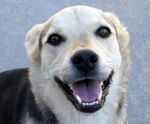
Even a friendly dog has sharp teeth.
Physical characteristics[edit]
Dogs generally share attributes with their wild ancestors, the wolves. Dogs are both predators and scavengers, possessing sharp teeth and strong jaws for attacking, holding, and tearing their food. Although selective breeding has changed the appearance of many breeds, all dogs retain basic traits from their distant ancestors. Like many other predatory mammals, the dog has powerful muscles, fused wrist bones, a cardiovascular system that supports both sprinting and endurance, and teeth for catching and tearing. Compared to the bone structure of the human foot, dogs technically walk on their toes.
Sight[edit]
Because the lenses of dogs' eyes are flatter than humans', they cannot see as much detail; on the other hand, their eyes are more sensitive to light and motion than humans' eyes. Some dogs, the sight hounds, have been specifically bred to capitalize on their use of vision in tracking prey. These breeds include the Greyhound and Afghan Hound.[20] The most capable sighthounds have a field of vision up to 270° (compared to 180° for humans). Broad-headed dog breeds with forward set eyes have a much narrower field of vision, sometimes no wider than the human 180 degrees.
Hearing[edit]
Dogs detect sounds as low as the 16 to 20 Hz frequency range (compared to 20 to 70 Hz for humans) and as high as 70 kHz to 100 kHz (compared to 13 to 20 kHz for humans), and in addition have a degree of ear mobility that helps them to rapidly pinpoint the exact location of a sound. Eighteen or more muscles can tilt, rotate and raise or lower a dog's ear. The dog's sensitivity to even very quiet sounds, as compared to a human's, means that a dog can identify a sound's location much faster, as well as hear sounds that are coming from far more distant sources than a human companion by its side.[21]
Those with more open ear shapes, like the erect ears of wild canids like the fox, generally hear better than those with the floppier ears of many domesticated species.
Smell[edit]
Dogs have nearly 220 million smell-sensitive cells over an area about the size of a pocket handkerchief (compared to 5 million over an area the size of a postage stamp for humans). It is fair to say that all dogs have a richer olfactory experience than ours. Some breeds have been selectively bred for excellence in detecting scents, over and above their canine brethren, such as the scent hounds, including and particularly Bloodhounds.
Reproduction[edit]
The dog's reproductive cycle[edit]
- See the main article at dog reproduction.
Bitches (female dogs) have a reproductive cycle that generally varies from six months to one year, although there are bitches that come into oestrus more or less frequently. This season is the only time that bitches are receptive to mating.
Gestation, the period in which mammals carry their developing young in the uterus, lasts about two months (60-64 days). Whelping (the birth of puppies) usually takes place without incident. The dam (mother) ordinarily gives birth to more than one puppy at a time. The group of pups born together is known as a litter.
Unlike human females, bitches remain fertile throughout their adult lives.
Dog breeding[edit]
- See the main article at dog breeding.
Dog breeders mate selected dogs together hoping to reproduce desired traits in the resulting offspring. Those who breed working dogs, such as herders, pick breeding stock that have instincts and abilities suited to the tasks the dogs are required to perform. By contrast, people who breed show dogs have strict sets of criteria to conform to; these are largely related to the dog's appearance and personality.
Formal dog organisations record purebred dogs in breed registries.
Dogs and humans in daily life[edit]
Some dog owners view their pets as fully-fledged family members, and most dogs are able to act the part. That ability stems from two basic sources: (1) the "hard-wiring" of the dog's behavior (programmed by its canine genes), and (2) the individual dog's experience with people. Dogs are, like humans, highly social animals. Although the instincts to behave in ways that ease interactions in the pack are inborn in all normal dogs, the right early experiences are critical if puppies are to grow up into companionable dogs. Those "right" experiences have everything to do with contact with people and with other dogs, and they must occur early in the dog's life - probably before the puppy reaches 12 weeks of age.
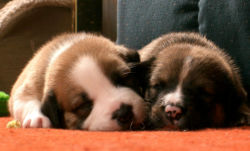
Puppies are rarely born singly; the group of puppies born together is known as a litter.
When puppies are raised with plenty of close contact to people and to other dogs, they become fully socialized. Socialized pups seem to view their human companions as members of their pack, and make few, if any, distinctions between their owners and fellow dogs. As these puppies mature, they can be taught to modify their behavior towards people, and treat their human companions more gently than their canine ones. Puppies who are raised without human nurturing have a harder time adjusting to interactions with owners once they have passed the critical period of about 3 months of age, no matter how much gentle attention is then given them. Orphaned puppies that are bottle fed and raised by humans alone, without any contact to any other dog or puppy, are in danger of becoming abnormally fixated on humans, and such puppies include animals that turn their attentions, sexual and social, to people instead of to dogs. Mounting behavior, for example is an annoyance to visitors and an embarrassment for owners. It not only signals sexual attention, but is a normal part of a dog's dominance behaviour, a tool for determining pack hierarchy. Proper dog-human socialization establishes the human's position as pack leader early, and eliminates the need for such trials.
The group of puppies born together is called a litter. That means that most pups are raised in a social group. However, in situations where puppies are isolated from other dogs, and are raised alone, without experiences in canine society, they can fail to learn the give and take of normal puppies. That's one reason that the dog or older puppy adopted from a shelter or obtained from a private seller can pose problems to a new owner. Brought out on a leash in streets where other dogs go by, or let off a leash in a dog park or outdoor space where other dogs are free, a poorly socialized dog may attack other dogs out of fear. Once grown, such pups most often can never be successfully integrated into a group of dogs.
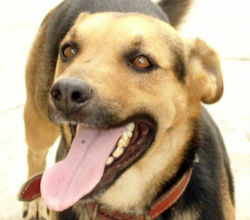
Dogs fill a variety of roles in human society and are often trained as working dogs. Thousands of dogs throughout the world actively herd sheep and cattle, guard people and property, and guide the blind and disabled. Dogs are an important part of rescue work in natural disasters. Their noses aid police and military searches for weapons, drugs, and other contraband. However, the most common (and perhaps most important) role of dogs in many countries is as a human companion.
Dog breeds[edit]
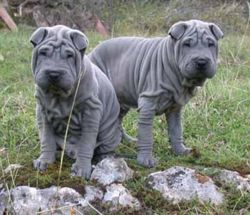
Just as one individual animal might have a combination of traits that causes that particular dog to appear so different from another, there are diverse breeds of dogs, where each breed includes dogs that are very similar to each other, but distinct in some identifiable manner from the dogs of a different breed. Through the years, by concentrating particular genes and reducing other ones, breeds have developed in which each member shares a recognizable "brand" of canine style.
In kennel club terms, purebred dogs are individuals that have been selected to "breed true". That means that a good example of a pure bred (pedigreed) dog looks like its kind in physical appearance, and acts like its kind in general temperament and certain behaviors. Generally, two purebred parents of the same breed will always produce a litter of pups that will grow up to be quite like them in looks, temperament, and behavior, as opposed to resembling the types of dogs from which the breed originated. The two Chinese Shar Pei youngsters pictured at left show the famously loose and wrinkled skin of their kind, but there are many more characteristics that typify that breed, ranging from a blue-black tongue to a calm, confident stance.
Dogs have an enormous range of normal height and lean weight. The Chihuahua is the smallest of the purebreeds and the Irish Wolfhound is the largest. Despite the great differences in size between these two extremes, all dogs are the same species and can interbreed successfully, although now, thanks to human intervention and the development of dog breeds, care must be taken to only breed individual dogs that are compatible--the mating of a Chihuahua bitch (female) with a Great Dane, for example, would have disastrous consequences for the health of the female dog. Dogs also have an incredibly broad range of coat (fur) and skin colors and patterns, skull and face shape, pelage (fur) length and texture, tail shape and carriage, athletic ability and temperaments. All of these, along with other physical characteristics, are influenced by inherited genes. Even certain specific complex behaviors (like pointing, or retrieving) appear to be inherited in dogs. The gene pool of domestic dogs is highly diverse.
Registered purebreds[edit]
Presently, over 800 dog breeds are recognized by breed and kennel clubs worldwide. Dogs can be registered with a club and receive certifications (commonly called "papers") that indicate a pedigreed purebred status.
Kennel clubs and their affiliates[edit]
- For more information, see the articles at breed club and kennel club
In order to qualify for registration, a purebred puppy must have two registered parents of the same breed, and meet the breed standard: a description of a certain "look" (physical conformation) and other features. This breed standard specifies what features are acceptable, which are preferred, and, sometimes, specifies particular features that, if present, disqualify the dog from being chosen as best of its kind. For example, an AKC-registered bulldog with the preferred face, ears, stance, size, and most other qualities of the breed, in an AKC-sanctioned confirmation show, would still be disqualified if it had a "brown or liver-colored nose" [2].
Each large kennel club hosts dog shows in which points are given for how well an individual dog compares to the breed standard, as compared to others of its type displayed at the same show. The male and female dogs competing in the top kennel clubs must be non-sterilized ("entire") animals and, although the gait and demeanor of the dog is evaluated as each walks around the show ring, the major emphasis is on body features. These contests are sometimes called conformational shows.
Increasingly, kennel clubs are catering to dogs and their owners through various shows and events other than conformational shows. The United Kennel Club was an innovator in this area; now such disciplines as agility, tracking, herding and carting are regularly sponsored by the American Kennel Club and others. Dogs may enter these shows and events whether or not they have been sterilized, and some of these events can include non-registered dogs and crossbreds as well.
Working dog organizations and registries[edit]
Other breeders concentrate on achieving uniform inherited behavioral traits in the dogs they produce. Some consider conformational traits important but secondary, some do not consider a dog's appearance at all, although this is rarer. Working, hunting, and herding dogs raised by field breeders sometimes only generally resemble the breed standard in appearance, but are more likely to be consistent in doing the job.
Independent breed clubs[edit]
These may include breeds-in-development, breeds recognized in only one country, and breeds where there are differences in type from the variety of the breed recognized by kennel clubs and their affiliates.
Natural breeds[edit]
In some parts of the world the isolation of dogs by geography (islands, mountain passes) has produced so-called natural breeds. These dogs are largely the product of natural selection. Members of a natural breed breed true - adults are similar to each other in appearance and behavior, and produce litters of puppies that not only grow up to resemble their parents, but - once grown, can between themselves propagate more litters of the breed. The Thai Bangkaew Dog is an example of a dog breed believed to have developed through isolation.
Sometimes these natural breeds have also undergone selective breeding by humans who desired a certain type of working dog. Such ancient working breeds include the Greyhound, the Mastiff and the Anatolian Shepherd Dog. Natural breeds made up many of the very first of the registered breeds, and also include some of the most recent additions to the list of breeds officially recognized by kennel clubs. Breed Recognition refers to the fact that a kennel club has officially acknowledged that the breed of dog has been shown to meet the requirements of the particular kennel club. This has nothing to do with the breed’s actual purebred status and the date of official recognition may have no relation to how long the breed has been known to be in existence. The Shar Pei is a natural breed, "having existed for centuries in the southern provinces of China, apparently to the Han dynasty, circa 200 BC".[22] Despite the fact that statues of dogs that look just like the Shar Pei date back to the Thirteenth Century, the breed was not actually “recognized” until the later part of the Twentieth Century (initially by the Hong Kong Kennel Club). Other natural breeds have never been recognized formally by any kennel club.
Crossbreds[edit]
- See the main article at mixed-breed dog.
Crossbreds or crossbreeds can be loosely defined as animals with at least one known pure breed in its parentage. Crosses between purebreds have been used (along with mixed-breed crosses) to establish most of the long recognized dog breeds. This notwithstanding, today's animal welfare advocates have openly deplored this method for any current propagation of a new breed. That's because it necessarily produces generations of mixed-breed puppies in a world where there is already a great overpopulation of such dogs.
Nevertheless, there are modern dog breeders who purposely mate dogs of two completely different breeds in order to produce a litter of puppies with a set of desired characteristics that are not fully present in either individual parent. Some reasons for this include protecting a longstanding strain of dog that is not yet a true breed (a method used for example to gain official recognition for the Jack Russell Terrier, long-established but only officially recognised within the last ten years or so) or in response to changing times (the cross breeding of dogs to introduce the genes for a naturally short tail to a traditionally docked breed, in response to anti tail-docking legislation, for example). Crossbreeds in development are sometimes called a breed colloquially, but do not fulfill the requirement of "breeding true". It takes many generations of careful matings, and much disappointment along the way, to arrive at a bona fide new breed.
Although the hybrid puppies in the cross between two purebreds (in breeders' terms, the F1 generation) often all look alike, these puppies cannot grow up and be mated to other dogs that were born of the same crossed parentage and reliably produce new puppies that are like them.
The breeders of notable crosses such as Cocker Spaniel-Poodle crosses, “Cockapoos” and Labrador Retriever–Poodle crosses “Labradoodles”, point out that development of a new breed is a worthy goal, and that, with ethical breeding practices, all puppies can be properly placed. In addition, some large commercial breeding operations that supply hybrid dogs claim to sell their puppies to pet shops under an agreement that every puppy is to be sterilized and therefore cannot ever used for breeding, this helps reduce indiscriminate breeding.
Mixed breeds (mongrels)[edit]
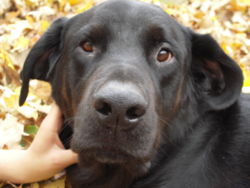
Dogs that came from parents who were not of any pure breed, or whose bloodlines comprise more than one breed, are called mongrels, mutts, or mixed-breed dogs. There are many other names for them, with varying levels of acceptability. The word ‘’mongrel’’, generally taken to be the correct formal word in dog fancy, is considered insulting by some dog lovers. That's probably because, in the English language, this word has sub-meanings that imply a lesser worth. However, it is fair to say that all dogs are derived from mongrels, and many scientists believe that in the absence of selective breeding, the dog would revert to the little brown pariah dog believed to be its most recent ancestor. Even the staunch proponents of purebreds generally agree that as pets, mixed-breed dogs offer their owners the same qualities of loyalty, intelligence and companionship that have come to be associated with dogs.
Behavior, temperament, and skills[edit]
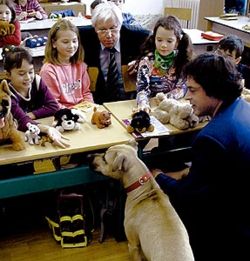
Intelligence[edit]
- See the main article at Dog intelligence for more information.
Both anecdotal evidence and scientific research suggest that dogs have a reasonably high intelligence. This intelligence is expressed differently in different breeds and individuals, along with sets of specific behaviors and talents that appear to be inherited. Optimal socialization and training of an individual dog is partly dependent on its own intelligence, inherited behaviors, and temperament.
Natural behaviour[edit]
The qualities characterized under the categories behaviour and temperament can have overlapping elements. These are related to intelligence, instinct and individual ability. They are often shaped by a dog’s individual personality and can be modified by training.
- See main article at Dog behaviour
- instinctive herding
- instinctively chasing prey animals
- innate cleanliness, such as not fouling the “nest”. This is often found in natural breeds.
Temperament[edit]
- dog-on-dog aggression – A few breeds cannot help having this inborn trait and their breed standards allow it. The Rottweiler is an example. This is a natural behaviour and should not be confused with dog-on-human aggression.
- inherent gentleness - This is characteristic of breeds such as the Labrador Retriever
- dog-on-human aggression – this is almost universally condemned. In show dogs, aggression against humans results in immediately dismissal from the show ring. (The dog is said to be “excused”.) Note that this undesirable trait should not be confused with the assertiveness acquired in the training of military and police dogs.
- observable loyalty – Loyalty is universally associated with dogs, but breeds such as the Miniature Fox Terrier are so particularly noted for it that this trait is written into the breed standard.
Special skills and ability[edit]
- speed – as exhibited by Greyhounds and Whippets, for example
- endurance - the Australian Kelpie’s breed standard requires that the dog gives the impression of having great stamina
- swimming - Gun dogs, a large category encompassing several groups, each containing many breeds, are often exceptional swimmers.
- intelligence - Dog intelligence is usually taken as a given, but breeds such as the German Shepherd Dog, the Border Collie and the Poodle have tested exceptionally high in this regard and proven highly trainable.
- jumping - The Border Collie is such a good jumper that some trial clubs hold separate contests for them out of fairness to other breeds. The Jack Russell Terrier is noted for its ability to jump very high, disproportionately to its height.
- exceptional sight, smell or hearing - The bloodhound is an example.
Training[edit]
Formal training in obedience and other disciplines is offered by many kennel clubs and private training organizations.
Police and military organizations typically run their own specialized training or contract with specialists expert in this exacting work. These are typically referred to as K-9 (canine) units, where dogs are trained to sniff out drugs or explosives, rescue trapped or lost people, or attack on command. These are often considered on a par with their human handlers in many respects; for example, when one dies or is killed in action, they are accorded full ceremonial funerals.
Since socialization to people and other dogs is part of the general training of puppies, many of the specialized training programs designed for dogs are given in classes. Not only do the dogs learn the skills taught, but they also learn to interact properly in a group situation.
Diet[edit]
If given the opportunity, dogs are omnivores, eating plant materials and animals. Generally, dogs will both scavenge carcasses and kill and eat animal prey.
Just as there are schools of thought about human diet, with advocates of various strict regimens ranging from macrobiotics to raw foods, there are a number of diets recommended for dogs that involve an entire philosophy of dog health. The BARF diet is one with a large following. There are breeders who insist that puppies purchased from them be maintained on particular diets, and generally their wishes should be respected.
When purchasing a puppy from a breeder, or adopting from a shelter, it is wise to find out the diet that the animal has been maintained on, and to make only gradual changes.
It is probably best to feed dogs a varied diet, supplemented with vitamins or high-quality commercial dog food. Most standard dog care guides stress that dogs should not be fed table scraps. This is because cooked bones can splinter internally, human food recipes can contain substances harmful for dogs, such as onions, and the fat in most table scraps is not any better for dogs than for people. In any case, there are widely-varying opinions and dogs have been known to do well on commercial food, raw food, home-cooked food, or, when their health requires it, special or restricted diets. When in doubt, dog owners should be guided by the advise of a veterinarian.
In the developed world, excessive fat is a problem for many dogs. Obese dogs can have health problems, and can benefit from restriction of calories in the diet and from increased exercise. Puppies, especially large and giant breed puppies, can suffer joint problems if fed too much highly nutritious food early on.
Dog health[edit]
Dogs are susceptible to various diseases, ailments, and poisons, some of which affect humans in the same way, others of which are unique to dogs. Dogs, like all mammals, are also susceptible to heat exhaustion when dealing with high levels of humidity and/or extreme temperatures.[23]
Diseases[edit]
Most diseases are species-specific; so generally the diseases that affect dogs cannot be transmitted to humans, and vice versa. Rabies is an exception to this rule (see below). (Compare this with parasites, many of which can be transmitted between species.) Infectious diseases commonly associated with dogs include rabies (hydrophobia), canine parvovirus, and canine distemper. Congenital diseases of dogs can include a wide range from hip dysplasia and medial patellar luxation to epilepsy and pulmonic stenosis. Except for the many infections which are species specific, dogs are susceptible to the same ailments that humans are, including diabetes, epilepsy, hypothyroidism, dental disease, heart disease, cancer, and arthritis.
Vaccinations[edit]
Immunizations are available for many of the infectious diseases that affect dogs. Some of these diseases are passed from dog to dog, others to dogs through insects. Vaccinations for canine distemper, hepatitis, leptospirosis, parainfluenza, canine parvovirus, Lyme disease and rabies are available. Some of these are combined in "one shot", and one - rabies - is often legally required of dog owners to provide for their dogs. That's because rabies is a fatal disease that can be transmitted by the bite of an infected dog.
Some of these illnesses are only prevalent in certain regions of the world, and the selection of which immunizations is important varies according to geography.
Parasites: treatment and prevention[edit]
Unlike diseases, some parasites can be passed between dogs and humans. Common external parasites are various species of fleas, ticks, and mites. Internal parasites include hookworms, tapeworms, roundworms, and heartworms.
Generally, prevention of these parasites involves the administration of a systemic medicine or the use of applied chemicals through the wearing of collars or other means.
Common genetic disorders[edit]
Some categories of dogs are especially prone to certain genetic ailments, such as hip dysplasia, luxating patellae or cleft palate. Occasionally genetic disorders can be breed-related: blindness and deafness are disorders than have been linked to genes in specific breeds. Gastric torsion and bloat is a dangerous problem in some large-chested breeds.
Lifespan[edit]
The typical lifespan of dogs varies considerably by breed, and seems to be somewhat related to size. For example, many giant dog breeds average only 7 or 8 years, while some small terrier breeds might live as long as 20 years.The average lifespan for mixed-breed and midsize dogs is about 13 to 14 years.
Other dog-human issues[edit]
Choosing and caring for dogs[edit]
There is no hard-and fast rule for the choosing of a pet. Among the many decisions that has to be made are whether to pick a purebred, crossbred or mutt, and what the individual can afford. Besides the initial outlay, the maintenance of dogs can be costly: food, shelter, training, health and dental care, emergency services, and boarding or home care all have to be considered. Dog owner's should be aware that, like humans, there are higher costs at the early and latter stages of a dog's life, when they have specialized needs.
In addition, owners should give consideration to what will happen to the dog in the event of the human's incapcity or death, and custody of family dogs in the event of divorce or separation.
Almost every breed of dog has an organized group of fanciers promoting it. Doing an internet search on the breed will yield a number of breeder sites, along with the various fanciers' organizations' web sites. Usually, one or more of the sites will list not only the attributes that are wonderful features of the breed, but any special health problems along with information for diagnosis and treatment.
Finally, it is probably best to give some thought to the final disposition of the remains of a deceased dog, so that those decisions do not have to be made when one is grieving for a lost friend.
Overpopulation[edit]
According to the Humane Society of the United States, 3-4 million dogs and cats are euthanized each year in the United States and many more are confined to cages in shelters because there are many more animals than there are homes. Spaying or neutering dogs helps keep overpopulation down.[3] Local humane societies, SPCAs and other animal protection organizations urge people to spay or neuter their pets and to adopt animals from shelters instead of purchasing them.
Dog/Wolf hybrids[edit]
In the wild, in areas where wolves still roam but the human population is also established, there is the occasional inter-breeding of wolf and dog. Since a wolf pack is not likely to perceive a dog as anything but prey, and a domestic dog is unlikely to survive attack from even a lone wolf, this is not as common as the interbreeding of dogs and coyotes in similar circumstances. When dogs and coyotes do interbreed in the wild, the resulting hybrids often fail to thrive because they lack behavior features of the wild canine parent. For example, the domestic bitch ordinarily comes into heat twice or more times a year, where as the coyote female is fertile only once a year. The timing of the dog's estrus does not correspond to the local seasons in a way that is advantageous to a newborn litter, and so puppies born in the lean times of winter or drought are more likely to die. The instinct to only allow one mating pair of animals in the pack and the nurturing instincts of other pack members ( including the males) towards that pair's pups, is almost completely lost in the dog; and so hybrids in the wild are less able to raise litters that survive.
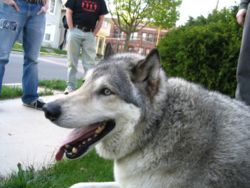
A dog/wolf hybrid.
In human society, there are people who selectively breed wolves and dogs as pets. In many areas, there are currently laws against keeping wolves in captivity, but there are regions where this is not the case. Often, the breeder of these hybrids works not from full wolves, but selects a hybrid wolf/dog as one parent, and either another hybrid or a domestic dog as the other parent.
Molecular genetic research has shown that dogs appear to have been domesticated from wolves, but not from wolves in general - instead, selected individual ancient wolves were kept and interbred. There is speculation that among the wolves that harried these early human settlements or frequented ancient dumps, the particular individuals chosen for "adoption" by people were probably not only very young - but were exceptionally "nice". There is variation in behavioral characteristics of individual members in every large group of wolves. It is not likely that the wild wolf pup who is at the extreme for aggressiveness, for example, would be tolerated in human society - once grown into an adult wolf, even if originally adopted in its infancy.
That has been the overall situation with wolf/dog hybrids. Even if carefully raised from birth, some adult wolf/dogs do not remain "tame" enough to safely interact with people. Breeders of wolf/dog hybrids routinely remove the puppies from the mother by 2-3 weeks of age, and hand raise them, bottle feeding the puppies every few hours. Each puppy is allowed contact with at least one other puppy, but all puppies are kept isolated from adult dogs and wolves (including their own mother) because if they are allowed contact they usually will not bond to their human handlers. That, of course, is not the case in pure domestic dog puppies, who can ordinarily be raised in the home with free access to both mother and human companions. Even with special nurturing of wolf/dog pups, and even though these hybrid puppies are usually much less than 50% wolf, there is an extremely high rate of attacks on humans by adult hybrid wolf/dogs - including the members of the human family that raised them. Breeders of hybrid wolf/dogs counsel that these dogs must at all times be fenced off from any possible contact with strangers [4]. Fatal human attacks by hybrids are not rare, and often victimize children.
Notable dogs[edit]
- A selected listing of dogs whose names have become recorded in history. None of the following dogs are fictional, and each of them helps illustrate the range of accomplishments of working and companion dogs. See the full article at: famous dogs.
- Barry (dog) [r]: Add brief definition or description
- Balto [r]: A lead sled dog in the 1925 serum run to Nome, in which diphtheria antitoxin was transported from Anchorage, Alaska to Nome by dog-sled teams to combat an outbreak of the disease. (1922 – March 14, 1933) [e]
- Brandy (dog) [r]: The first "seeing-eye dog" in the United States. [e]
- Greyfriars Bobby [r]: Nineteenth-century Syke Terrier in Edinburgh, Scotland who became famous for keeping vigil by his master's grave every day (barring extreme weather) for fourteen years. [e]
- Hachiko [r]: A faithful Akita, famous for waiting every evening at the train station used by his late master. [e]
- Rin Tin Tin [r]: Famous German Shepherd Dog film star. Unlike Lassie, the original Rin Tin Tin (known as "Rinty") was a real dog. His success was credited with saving Warner Brothers film studio from bankruptcy. [e]
Footnotes[edit]
- ↑ International Commission of Zoological Nomenclature: Opinion 2027: Usage of 17 specific names based on wild species which are pre-dated by or contemporary with those based on domestic animals (Lepidoptera, Osteichthyes, Mammalia): conserved
- ↑ Stephen Budiansky, The Truth about Dogs: An Inquiry into Ancestry Social Conventions. Mental Habits Moral Fiber Canis familiaris. 2001 ISBN 014100228X
- ↑ In an 2002 article for BBC News Online, Christine McGourty cites two separate American studies, one at Harvard University and the other at the Wolf Hollow Wolf Sanctuary, both in the United States. Puppies were found to be as good as older dogs at finding hidden food using clues from humans. [1] sourced on 7/20/2007.
- ↑ Ashworth, Lou Sawyer and Kraft, Irene. The Concise Encyclopedia of Dogs. London: Octopus Books, 1974. pp. 79-81.
- ↑ 5.0 5.1 5.2 Savolainen, P., Y. P. Zhang, J. Luo, J. Lundeberg, and T. Leitner. 2002. Genetic evidence for an East Asian origin of domestic dogs. Science 298:1610-1613.
- ↑ 6.0 6.1 Vila, C., P. Savolainen, J. E. Maldonado, I. R. Amorim, J. E. Rice, R. L. Honeycutt, K. A. Crandall, J. Lundeberg, and R. K. Wayne. 1997. Multiple and ancient origins of the domestic dog. Science 276:1687-1689.
- ↑ Don E. Wilson & DeeAnn M. Reeder (editors). 2005. Mammal Species of the World. A Taxonomic and Geographic Reference (3rd ed), Johns Hopkins University Press, 2,142 pp.
- ↑ Thalmann, O; B. Shapiro, P. Cui, V. J. Schuenemann, S. K. Sawyer, D. L. Greenfield, M. B. Germonpré, M. V. Sablin, F. López-Giráldez, X. Domingo-Roura, H. Napierala, H-P. Uerpmann, D. M. Loponte, A. A. Acosta, L. Giemsch, R. W. Schmitz, B. Worthington, J. E. Buikstra, A. Druzhkova, A. S. Graphodatsky, N. D. Ovodov, N. Wahlberg, A. H. Freedman, R. M. Schweizer, K.-P. Koepfli, J. A. Leonard, M. Meyer, J. Krause, S. Pääbo, R. E. Green, R. K. Wayne (15 November 2013). "Complete Mitochondrial Genomes of Ancient Canids Suggest a European Origin of Domestic Dogs". Science 342 (6160): 871-874. DOI:10.1126/science.1243650. ISSN 1095-9203. 871. Retrieved on 15 November 2013. Research Blogging.
- ↑ Than, Ker (14 November 2013). New Theory: Hunter-Gatherers Domesticated Dogs From Gray Wolves. National Geographic. National Geographic Society. Retrieved on 15 November 2013.
- ↑ The idea of the wolf being more proactive in its "domestication" became more seriously discussed in 1he 1990s. From Wolf to Dog New York Times, September 24, 2007, discusses competing theories. Ray and Lorna Coppinger argue in Dogs: A New Understanding of Canine Origin, Behavior and Evolution, that this was natural selection, in which scavenger wolves hung about human encampments; the ones who became less afraid of people got the first pick of human waste (food), and therefore thrived. Wolf to Woof: The Evolution of dogs, National Geographic, January 2002, and Dr Bruce Fogle in The New Encyclopedia of the Dog discuss the same idea. However, the idea that primitive humans selected the tamest wolf cubs and bred like to like over successive generation still has its adherents. Dogs and more dogs, an Affectionate Analysis. Video recording. Nova, WGBH, Boston, 2004.
- ↑ The site is referred to as Tessili-n-Ajjer in The Concise Encyclopedia of Dogs op.cit.
- ↑ Alderton, David. The Dog: The Complete Guide to Dogs and Their World. London: New Burlington Books, 1987.
- ↑ The Concise Encyclopedia of Dogs contains illustrations of domestic dogs from a Minoan painting, circa 2000 B.C. and an Egyptian painting circa 1450 B.C., both depicting hounds, and an Assyrian relief depicting a mastiff type hunting dog in what appears to be a choke collar.
- ↑ See for example the bas-relief of Asshurbanipal, c. 2000 B.C. This and a Greek vase showing a depiction of a mythological tale featuring dogs are illustrated in The Dog by Alderton, op. cit.
- ↑ Pliny the Elder, Natural History
- ↑ The Concise Encyclopedia of Dogs, op. cit.
- ↑ Dame Juliana Berners The Boke of St Albans 1496, a hunting reference book.
- ↑ Dr John Caius, Of Englische Dogges: Dr Johannes Caius, De Canibus Brittanicus (1570) and translated by Abraham Fleming as Of Englishe Dogges (1576).
- ↑ The tapestries are now in The Cloisters museum in New York City. This is also illustrated in Alderton, op. cit.
- ↑ Catalyst: Dogs' Eyes. Australian Broadcasting Corporation (2003-09-25). Retrieved on 1st April 2007.
- ↑ How well do dogs hear? Accessed 1st April 2007
- ↑ Source for quote: Chinese Shar-Pei in The Complete Dog Book, Official Publication of the American Kennel Club, 20th Edition, Ballantine Books, New York, 2006,page 543
- ↑ Gedon, Trisha (2006-05-25). Summer heat can be tough on pets. Division of Agricultural Sciences and Natural Resources. Oklahoma State University. Retrieved on 2006-08-21.
 KSF
KSF